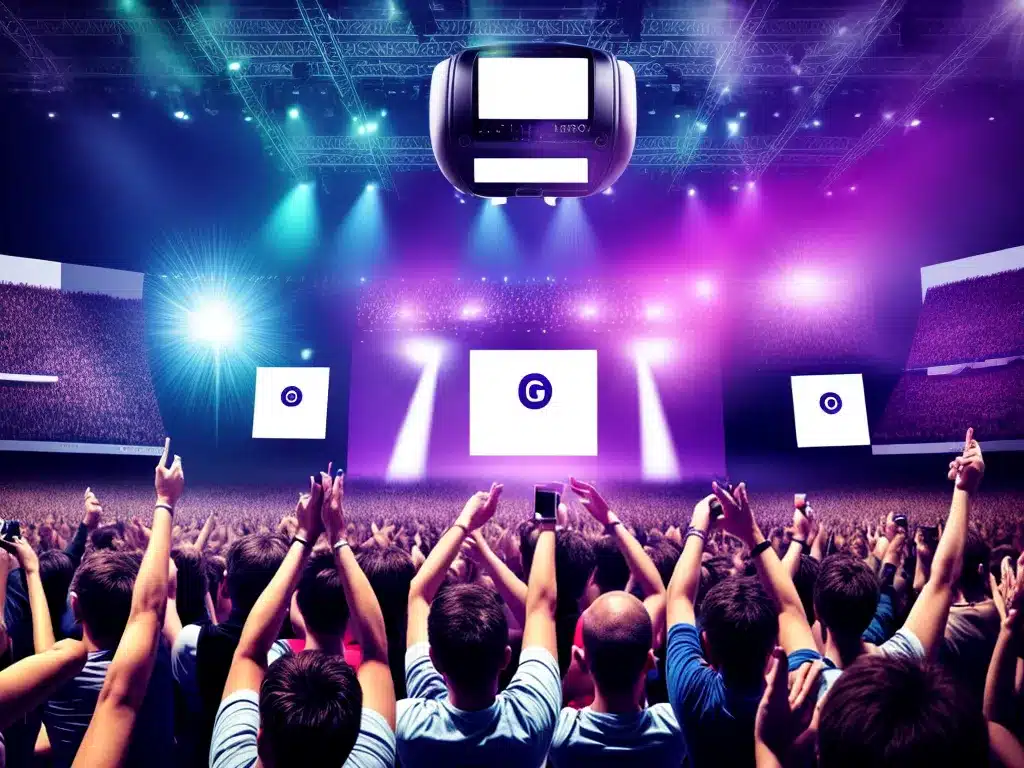
IoT and Crowd Analysis in 2024: The Future of Events
Introduction
The Internet of Things (IoT) and crowd analysis are transforming events in 2024 and beyond. As an event organizer in 2024, I am excited about the new opportunities these technologies present for creating more engaging and personalized event experiences. In this article, I will explore how IoT and crowd analysis will impact various aspects of event planning and execution in the near future.
Enhanced Event Insights with IoT Sensors
IoT sensors at events provide valuable data that gives event organizers enhanced insights into attendee behavior. Some examples:
-
Tracking attendee movements: IoT sensors placed throughout the venue can track where attendees are congregating, how long they engage with various activities, and traffic flow between areas. This allows me to optimize the layout and event flow.
-
Exhibitor booth analytics: Sensors at exhibitor booths can track visitor numbers and dwell time. As an organizer, this helps me identify the most popular booths to inform future event planning. It also provides exhibitors with data to quantify their event ROI.
-
Environmental monitoring: IoT sensors can monitor noise levels, temperature, air quality, and more. I can use this data to quickly address issues and ensure attendee comfort.
-
Wearable integration: If attendees wear IoT-enabled badges or wristbands, it opens up many more possibilities for data collection throughout the event.
The bottom line is that IoT gives me a much deeper view into real-time attendee behaviors, needs, and preferences at my events. This allows me to take corrective actions and continuously optimize the event experience.
Automated Crowd Management with IoT and AI
IoT sensors coupled with artificial intelligence give me powerful new crowd management capabilities:
-
Predicting crowd sizes: By pulling in data on registrations, social media activity, and other real-time signals, AI can generate accurate forecasts of peak crowd sizes at different times. This allows me to properly staff events and prepare contingency plans when needed.
-
Detecting congestion: IoT sensors can identify congestion hot spots in real-time. Integrating this with AI and digital signage allows for automated messaging to redirect attendees and relieve congestion before it becomes an issue.
-
Enhancing safety: AI crowd analysis algorithms can identify anomalies and dangerous crowd behavior as it emerges. This gives me time to take measures to diffuse problems and enhance event safety.
-
Optimizing staffing: AI can analyze sensor data to predict optimal staffing levels throughout the day and make adjustments on the fly. This ensures resources are properly allocated as crowds fluctuate.
Automated crowd management takes much of the guesswork out of running complex events. I save substantial time, while attendees enjoy smoother traffic flow and safer conditions.
Personalized Experiences
Combining real-time IoT sensor data with attendee personal information allows me to get creative in designing personalized experiences:
-
Customized content: Digital signage and mobile push notifications can deliver personalized content and recommendations based on an individual’s interests and behavior.
-
Gamification: Attendees can use their wearable badge or wristband to check-in at different locations to earn points and unlock rewards. Personalized journeys can be created through this gamification.
-
Smart sessions: Using sensors, I can capture audience engagement levels at sessions in real-time. This allows me to dynamically adapt the content and flow to maximize engagement.
-
Networking recommendations: With data on attendees’ professional profiles and interests, AI can match people for suggested networking. Recommendations can be delivered through a mobile app.
Hyper-personalization makes events feel more relevant. Attendees also appreciate the fun factor of things like gamification and smart content delivery.
Challenges to Address
While promising, there are some challenges I will need to navigate with these technologies:
-
Data privacy: Attendees may have concerns about extensive personal data collection. Transparency and allowing opt-outs help mitigate this issue.
-
Over-automation: Overly automated experiences could make events feel cold and impersonal. Human touch points must be maintained.
-
Technical difficulties: Sophisticated IoT/AI systems could be prone to technical glitches. Extensive testing and backup plans are essential safeguards.
-
Cost: There are substantial costs involved in deploying and managing complex IoT/AI infrastructure. Return on investment must be evaluated.
With proper planning however, I am confident these challenges can be sufficiently addressed.
The Future Looks Bright
Despite some hurdles, I am extremely bullish on IoT and crowd analysis playing a transformative role at events by 2024. These technologies provide me with incredibly rich data to help execute events more efficiently and deliver next-level experiences that delight attendees. While events will always maintain an essential human element, IoT and AI will enable me to take experiential design to new heights. As an organizer, I could not be more excited about the future. Now is the time to start preparations to fully capitalize on these powerful innovations!












